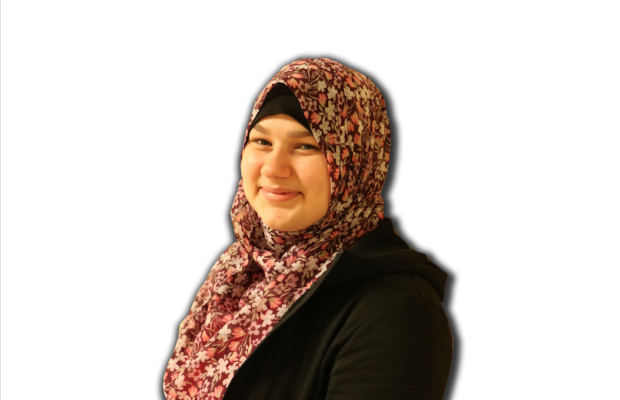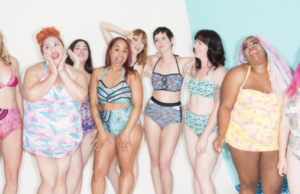Hijabs represent freedom of choice

On January of 2017, as I was entering the United States after living in Turkey throughout middle school, I was wearing a hijab. After handing my passport to the officer, she looked me up and down and said, “Is that religious?”pointing at my hijab.
I was surprised because although I knew that as a young-Muslim woman who wears the hijab, I was going to receive a lot of questions regarding my faith and the hijab in particular, but I definitely wasn’t expecting it to be this soon.
I responded by simply saying, “Yes,” thinking it would be enough, but she slowly leaned back on her chair, tapping on the table with a pen which she obviously spent most of her time chewing on and said, “Really?” implying she didn’t believe what I just said.
I nervously repeated my answer because I was confused by her tone. She then said something that I probably will not forget for the rest of my life, something that will always make me smile when I think about it.
“Then why is your mom not wearing one?” she asked. I told the officer that she wasn’t because she didn’t want to, but it was so hard for her to believe that my mom was an independent woman that can make decisions about her own body.
The hijab, is an Arabic word that means “to cover” in English, and it isn’t just used to describe the head-covering, but it is also a regular verb that is used on a daily basis in Arabic speaking communities.
When thinking about the hijab, we start seeing Iranian women, with scarves at the edge of their sticks who are fighting against their oppression and forcefully thrown in jails. Or, we think of Saudi women who are covered all the way up to their eyes and were recently honored the right to drive. Or maybe we think of the Taliban beating up women who go outside without covering their hair and bodies. These awful actions toward women that are constantly shown in the media paints a very clear picture in our heads: Muslim women are oppressed. However, that simply isn’t the case.
Though the hijab is directly affiliated with Islam, the covering of hair is in Christianity and Judaism, as well as many other religions in different levels. In the Bible it says, “But every woman who prays or prophesies with her head uncovered, dishonors her head—it is the same as having her head shaved. For if a woman does not cover her head, she might as well have her hair cut off, but if it is a disgrace for a woman to have her hair cut off or her head shaved, then she should cover her head.” (Corinthians 11:5, 11:6).
For some Christians, the covering of the head refers to long hair, but when the scripts are translated to Greek, the words that are used for long hair (peribolaion) and covering with an artificial material (katakalupto) are different.
Where in Judaism, the covering (hijab) is referred to as tzinuit, which means modesty. Tzinuit is mostly advised to married women. “Young girls who are betrothed (the first part of the marriage has happened) are forbidden to go with their heads uncovered” (Mishna Berura 75:2).
Although it is mostly practiced among married women, some rabbis rule unmarried girls as well. “The daughters of Israel, whether unmarried or married, should not go out in the marketplace with their head uncovered” (Issurei Biah 21:17).
What about Islam? What does Islam say about the hijab?
In Islam, both men and women are told “to cover.” In fact, in the Quran, before the hijab of the body, the hijab of the ear and eyes are advised. “Tell the believing men to lower their gaze and guard their private parts, that is purer for them; surely Allah is aware of what they do. And tell the believing women to lower their gaze and guard their private parts and do not display their ornaments (wrap their shawls around their breast lines) except what appears thereof; Allah is the most forgiving and merciful” (Quran 24:30-31).
Although some women choose to wear it, or, some are forced because of cultural, political reasons, Islamic scholars do not all agree on veils. There are millions of Muslim women who don’t accept restrictions to their clothes and don’t wear the hijab. As we can understand from this verse of the Quran, there is no religious forcement, or, a threat that strictly tells women to cover from head-to-toe.
For most scholars, the hijab is considered as a preference, and countries where women are forced to wear the hijab are condemned by the majority of Muslims all around the world.
There are many different reasons to why a Muslim woman chooses to wear the hijab; for some, it is a feminist statement; in a world where women are valued by their sexuality, what can be greater than to reject this notion? Some wear it because they want to wear it, and for some, it is as simple as looking good in it.
The problem is the people who assume women are oppressed, seeing those wearing a hijab as poor Muslim women who can’t stand up for their rights and who just obey what their husbands or fathers tell them to do.
I feel the oppression in those pitiful eyes that I have never felt from my father, who tells me that I don’t have to wear the hijab if I don’t want to. I am sick of being labeled as a Muslim before as a human being. This is the reason why that little story I told in the beginning always makes me smile. Because at the end, she asked me why. She asked me. If you don’t know why people do stuff, instead of assuming, the solution is as simple as asking them; and, no, it isn’t offensive. Even if you ask me if I keep my headscarf on when I shower, which I do not, it is never going to be as offensive as hearing, “Honey, you don’t have to wear that thing anymore; you’re in the United States now.”









You must be logged in to post a comment Login